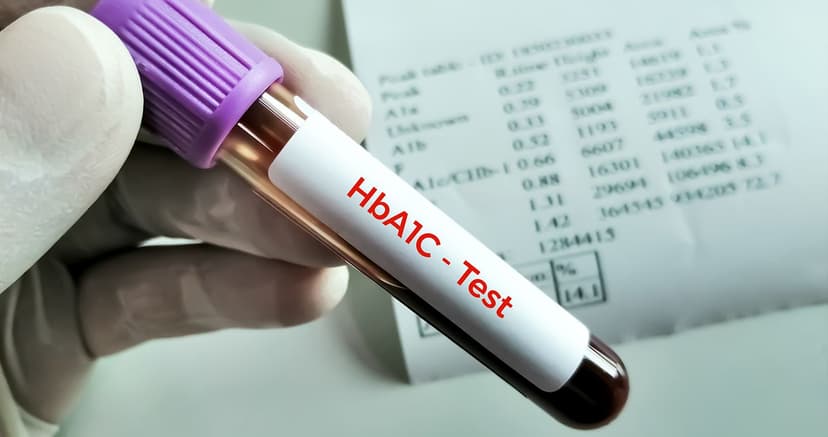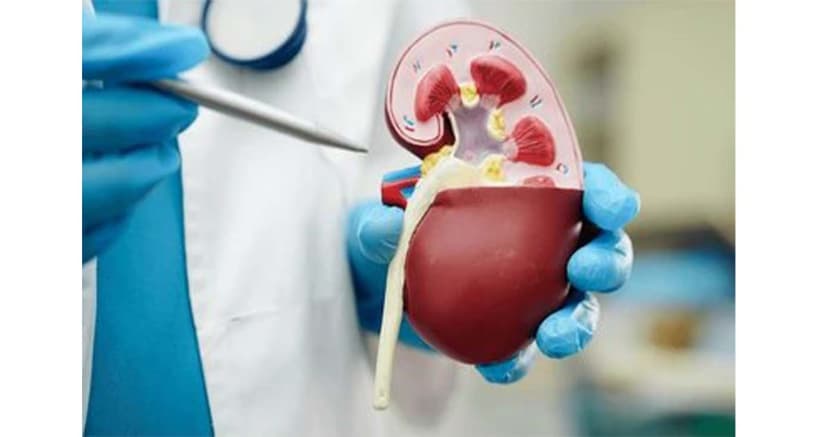Painful Periods or Something More? Understanding Dysmenorrhea in Endometriosis
By:

Apex Hospitals
01-11-2024

For many women, menstrual cramps are a familiar, albeit unpleasant, part of life. But what happens when period pain becomes so intense that it disrupts daily activities, affects mental well-being, and feels far from "normal"? This is often the reality for those living with dysmenorrhea, a term used to describe severe menstrual pain.
When dysmenorrhea is linked to endometriosis, the pain is more than just a symptom—it’s a sign of a more profound underlying condition. Endometriosis is a chronic disorder where tissue similar to the lining of the uterus grows outside of it, causing debilitating pain, inflammation, and sometimes infertility. For those affected, each menstrual cycle becomes a reminder of a condition that is often misunderstood, underdiagnosed, and challenging to manage.
What is Dysmenorrhea?
Dysmenorrhea, the medical term for painful periods or menstrual cramps, is a common condition experienced by many individuals during menstruation. The intensity and nature of the pain can vary, and it is categorized into two distinct types: primary dysmenorrhea and secondary dysmenorrhea.
- Primary Dysmenorrhea
Primary dysmenorrhea refers to recurrent menstrual cramps that are not linked to an underlying medical condition. This type of pain typically begins one to two days before menstruation or at the onset of bleeding. The discomfort, which can range from mild to severe, is often felt in the lower abdomen, back, or thighs and usually subsides within two to three days.
Primary dysmenorrhea is the most common type of menstrual pain and is caused by the natural contractions of the uterus as it sheds its lining. These contractions are triggered by prostaglandins, hormone-like substances contributing to inflammation and pain.
- Secondary Dysmenorrhea
Secondary dysmenorrhea occurs when menstrual pain is caused by an underlying medical condition or infection in the reproductive organs. Unlike primary dysmenorrhea, the pain associated with secondary dysmenorrhea often begins earlier in the menstrual cycle, sometimes several days before bleeding starts, and may persist throughout the period.
Secondary dysmenorrhea is less common but often more severe and persistent than primary dysmenorrhea.
When pain is more than “normal.”
Dysmenorrhea is considered more than usual when the menstrual pain becomes severe, persistent, and interferes significantly with daily life. While mild to moderate menstrual cramps are common and typically subside within a few days, sure signs suggest the pain may be beyond what is considered typical. These include:
1. Severe and Prolonged Pain:
If the pain is unusually intense and lasts for several days, or if it begins well before your period starts and continues even after menstruation ends, it may indicate an underlying condition, such as secondary dysmenorrhea.
2. Pain that Interferes with Daily Activities:
If the pain is so severe that it prevents you from going to work, school, or engaging in daily activities, it could be a sign that something more than normal menstrual cramps is happening.
3. Pain that Gets Worse Over Time:
If your menstrual cramps are becoming progressively more painful with each cycle, it could indicate conditions like endometriosis, which can cause more intense and persistent pain.
4. Other Symptoms Alongside Pain:
If the pain is accompanied by other unusual symptoms such as heavy bleeding, irregular periods, pain during intercourse, or digestive issues, these could be signs of conditions like endometriosis.
5. Pain Not Relieved by Normal Pain Relief Methods:
If over-the-counter pain medications or typical home remedies (like heat pads or light exercise) are not helping, or if the pain requires more potent drugs or interventions, it's time to consult a healthcare professional.
The Link Between Endometriosis and Dysmenorrhea
Endometriosis is a chronic condition in which tissue similar to the lining inside the uterus (the endometrium) grows outside the uterus, often affecting the ovaries, fallopian tubes, and the tissue lining the pelvis. This abnormal growth can cause a range of symptoms, the most common of which is dysmenorrhea or painful periods.
How Endometriosis Leads to Dysmenorrhea
In a typical menstrual cycle, the endometrial tissue inside the uterus thickens, breaks down, and sheds during menstruation. However, in endometriosis, the tissue growing outside the uterus behaves the same way—it thickens, breaks down, and sheds—but it becomes trapped since it cannot exit the body. This leads to internal bleeding, inflammation, and the formation of scar tissue (adhesions), all of which contribute to the painful symptoms of dysmenorrhea.
Here’s how endometriosis and dysmenorrhea are connected:
1. Inflammation and Pain:
The tissue outside the uterus causes irritation and inflammation in the surrounding organs. As the tissue responds to hormonal signals during the menstrual cycle, it sheds and leads to inflammation, which results in intense pelvic pain, cramps, and discomfort.
2. Adhesions and Scar Tissue:
The internal bleeding caused by the shedding of endometrial tissue outside the uterus can lead to scar tissue formation, known as adhesions. These adhesions can bind organs together, causing further pain and complications and intensifying menstrual cramps.
3. Chronic Pain:
Unlike typical primary dysmenorrhea, which usually resolves after a few days, dysmenorrhea associated with endometriosis can last for days or even weeks. The severity of the pain can vary, but it often becomes chronic, affecting not only menstruation but also daily activities.
4. Pain Beyond Menstruation:
While dysmenorrhea is typically associated with the menstrual cycle, women with endometriosis may also experience pain during ovulation or even at random times throughout the month. This is because the tissue outside the uterus responds to hormonal changes like the endometrial tissue inside the uterus, causing pain even when not menstruating.
Why Early Diagnosis Matters
Endometriosis is a progressive condition. Without treatment, it can lead to complications such as:
- Chronic pelvic pain
- Infertility
- Damage to organs like the bowel or bladder
Recognizing the symptoms of dysmenorrhea linked to endometriosis early can pave the way for timely interventions.
Treatment Options for Endometriosis-Related Dysmenorrhea
While there is no cure for endometriosis, several treatments can help manage symptoms and improve quality of life:
- Pain Management: Prescription medications, including hormonal therapies, can help reduce pain and inflammation.
- Lifestyle Adjustments: Regular exercise, stress management, and dietary changes may provide relief.
- Surgical Intervention: In severe cases, laparoscopic surgery can remove endometrial lesions and scar tissue, alleviating pain and improving fertility.
Breaking the Stigma Around Menstrual Pain
One of the biggest hurdles in diagnosing endometriosis is the normalization of period pain. For generations, women have been told that excruciating menstrual pain is "just part of life." It's time to challenge that narrative. Severe pain is abnormal, and seeking medical help is a step toward understanding your body and improving your health.
When to Seek Medical Help
If you experience severe menstrual pain, especially if it becomes progressively worse, or if you have other symptoms like heavy bleeding or pain during intercourse, it is crucial to consult a healthcare provider. Early diagnosis of endometriosis can help manage symptoms effectively and prevent further complications. Treatment options range from pain management with medication to surgical interventions, depending on the severity of the condition.
Understanding the link between endometriosis and dysmenorrhea can help women identify the cause of their symptoms and seek the proper treatment to improve their quality of life.
Empowering Women with Knowledge
Understanding the connection between dysmenorrhea and endometriosis is crucial for empowering women to advocate for their health. Painful periods should never be ignored, significantly when they disrupt your life. With awareness, early diagnosis, and proper treatment, it’s possible to manage endometriosis and reclaim control over your life.
If you or someone you know struggles with painful periods, don’t hesitate to seek help. At Apex Hospitals, we’re here to support you with expert care and compassionate solutions. Let's work together to make every month a little easier.
FAQS
Related Articles
Connect With Us
Health In A Snap, Just One App.
KNOW MORE
























































































































































